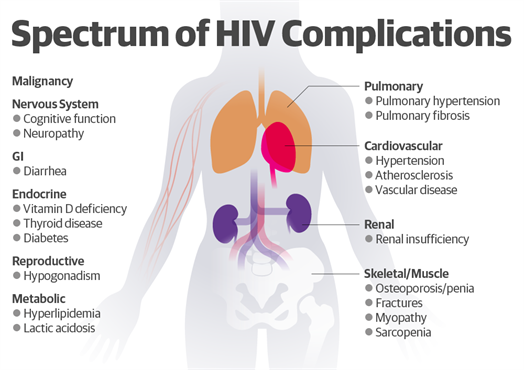HIV/AIDS
What is HIV/AIDS?
HIV stands for Human Immunodeficiency Virus, and it is the virus that causes AIDS. Unlike most viruses, like the common cold or flu, our immune systems cannot fight HIV. Once a patient is infected, they carry the virus for life.
- H – Human: This particular form of the virus infects only humans.
- I – Immunodeficiency: HIV weakens the immune system by attacking its most important cells.
- V – Virus: As a virus, HIV reproduces by taking over a healthy host cell.
HIV replicates in and then kills T-cells, a key player in our immune systems. If HIV destroys enough of these host cells, the immune system can no longer fight off basic infections and illnesses. Once an HIV-positive patient begins to suffer from opportunistic infections and diseases, like chronic dysentery, osteoporosis or skin infections, that patient is considered to have AIDS.
- A – Acquired: While you can be born with HIV, you are not born with AIDS — it is acquired after birth.
- I – Immuno: AIDS targets your immune system.
- D – Deficiency: AIDS is characterized by deficient immune responses.
- S – Syndrome: AIDS is not a singular disease, it is called a syndrome because it comes with a whole host of complications and symptoms.
Featured Online Programs
Even with treatment, patients living with HIV still experience higher rates of certain non-communicable disease (NCDs) as they age. Common NCDs include heart disease, diabetes and arthritis; these conditions affect multiple body systems from pulmonary and cardiovascular failures to disorders of the nervous systems. Aside from a compromised immune system, these conditions may also be caused by the antiretrovirals prescribed to treat them.
Currently there is no cure for AIDS. However, many treatments allow HIV-positive patients to live long and healthy lives. As long as a patient has access to treatment, AIDS is not the death sentence it was thought to be in the early years of the crisis. In most developed countries, treatment is accessible at reasonable cost. To date, over 20 of the most powerful combination therapies have been approved by the FDA, though these drugs are not available everywhere.

